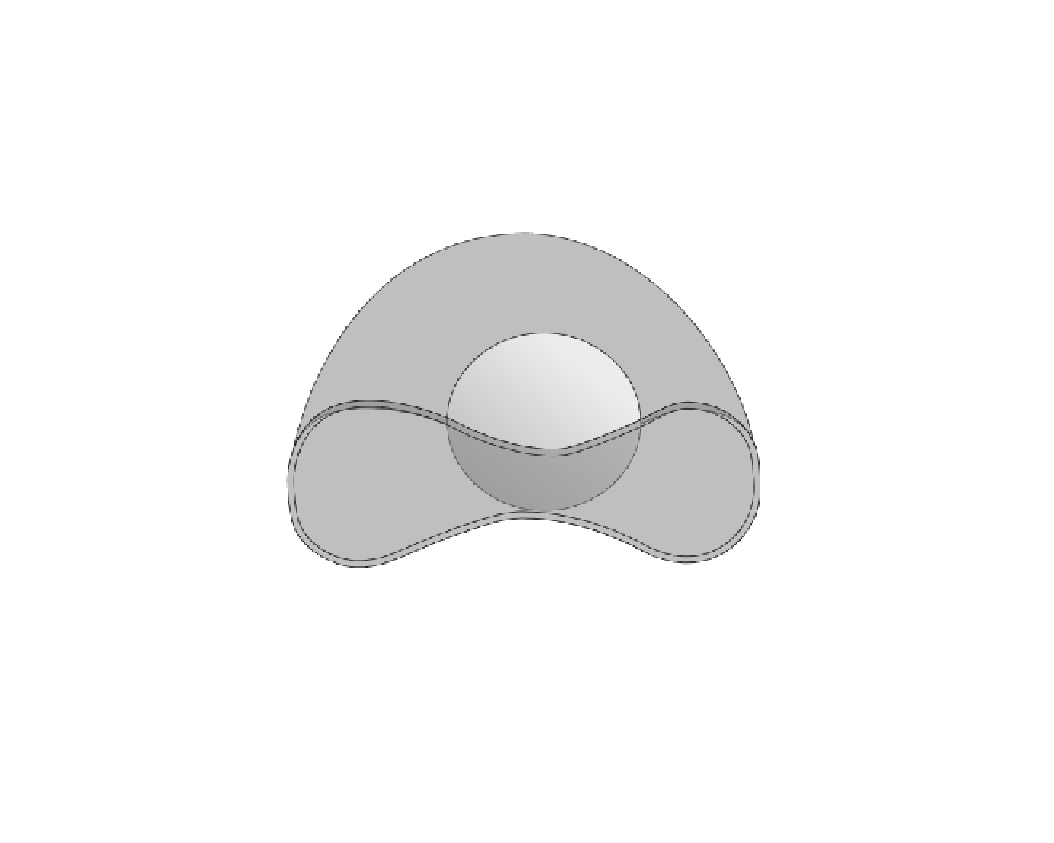Biomedical Engineering Reference
In-Depth Information
FIGURE 5.5
Cross-sectional view
of a mature red blood cell. We also
include the average range for various
dimensions of a mature red blood
cell. Each red blood cell contains
hemoglobin molecules that facilitate
the transport of oxygen and carbon
dioxide throughout the cardiovascu-
lar system. There are approximately
5,000,000 red blood cells/
L of blood,
and each red blood cell remains in
circulation for
μ
approximately 120
2.3-2.8
μ
m
0.5-1.15
μ
m
days.
7.2-8.4
μ
m
change in order for these cells to squeeze through capillaries (more on this can be found
in Part 3 of this textbook). Due to the normal bi-concave shape of red blood cells, there is
an excess amount of red blood cell membrane allowing the cell to deform to many other
shapes. Under normal conditions, there are approximately 5,000,000 red blood cells/
Lof
blood (males tend to have a concentration slightly higher than this quantity and females
have a concentration slightly lower than this quantity). Under normal conditions, the
quantity of hemoglobin per red blood cell is maintained at its maximum (i.e., saturated).
The quantity of hemoglobin within the red blood cell is only limited by the production of
hemoglobin and not the transport of hemoglobin to form red blood cells. At its maximum
production rate, the concentration of hemoglobin in each red blood cell is approximately
30 g/dL. The average red blood cell can stay in circulation for approximately 120 days
before the cell (especially the hemoglobin and other proteins) is recycled.
The majority of red blood cells are produced in the marrow of bones (early during fetal
development, the liver/spleen/yolk sac produces red blood cells). In contrast to what
many believe, most of the red blood cells are produced in the vertebrae and sternum dur-
ing later stages of life (greater than 20 to 25 years old); only during the early stages of life
do the marrow of long bones produce significant quantities of red blood cells. All blood
cells are formed from hematopoietic stem cells, which differentiate and specialize into spe-
cific committed stem cells, which individually develop into different blood cell types. The
major regulator of red blood cell production in the body is carried out by erythropoietin.
Under hypoxic conditions (low tissue oxygenation), the formation of erythropoietin is
increased within the kidneys and liver. Erythropoietin circulates to the red blood cell pro-
ducing marrow and induces the differentiation of hematopoietic stem cells into pro-
erythroblasts, which differentiate into erythrocytes within 1 to 2 days. For the complete
differentiation of pro-erythroblasts into erythrocytes, vitamin B
12
, and folic acid are
required, as co-factors of the conversion reaction. Both of these vitamins are needed for
DNA synthesis, which prevents nuclear maturation in the pro-erythroblast stage (red
blood cells do not contain nuclei). Without these two vitamins, erythrocyte-like cells can
μ










Search WWH ::

Custom Search